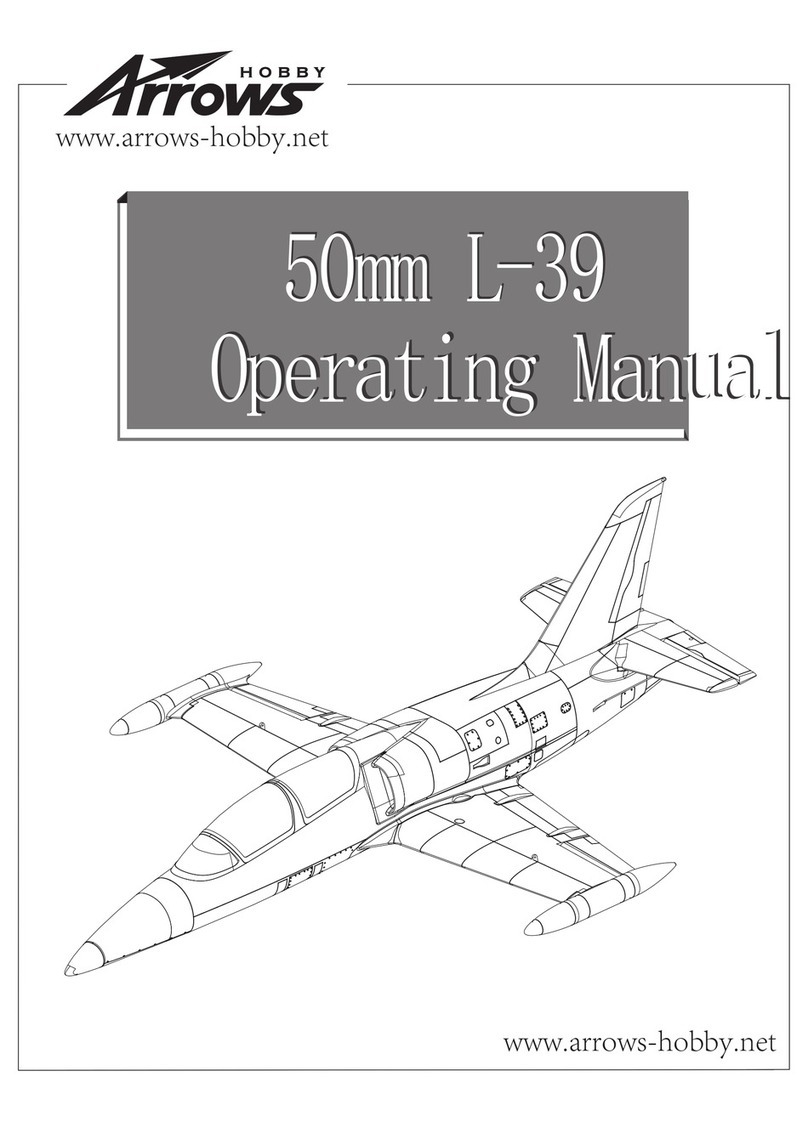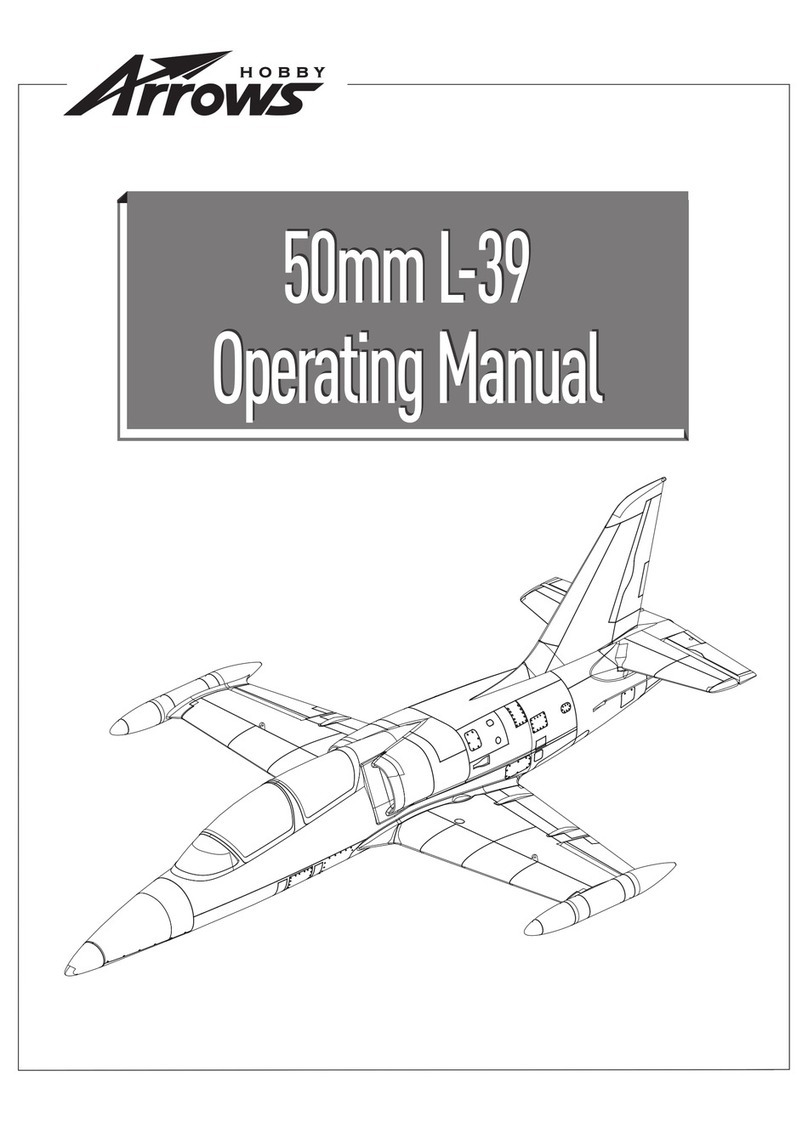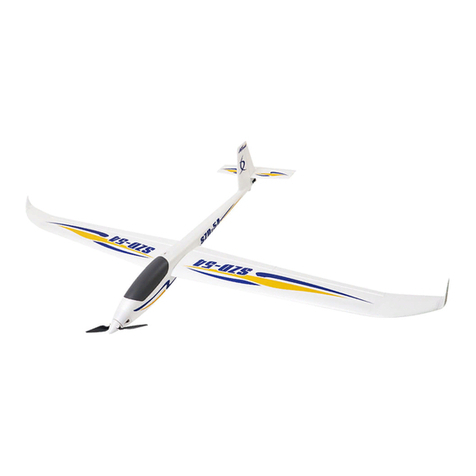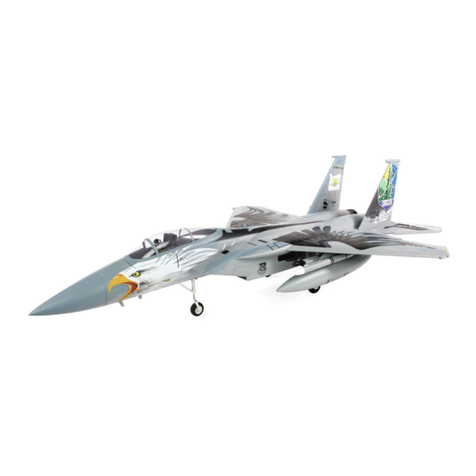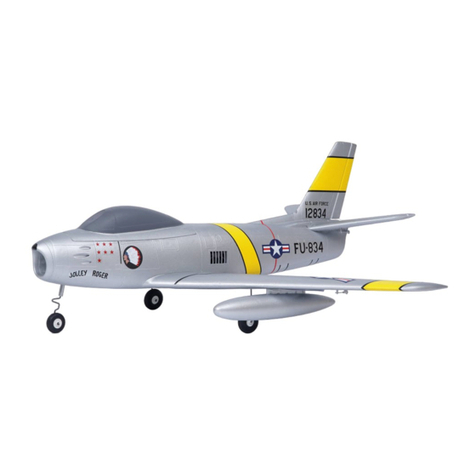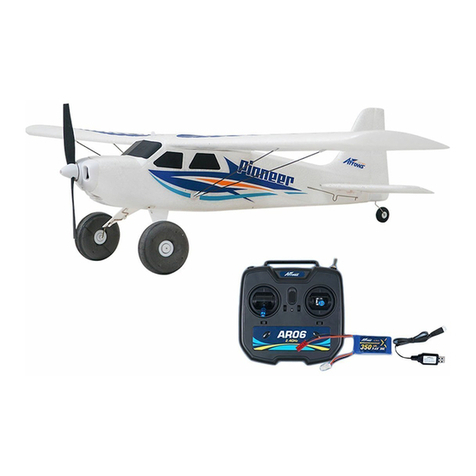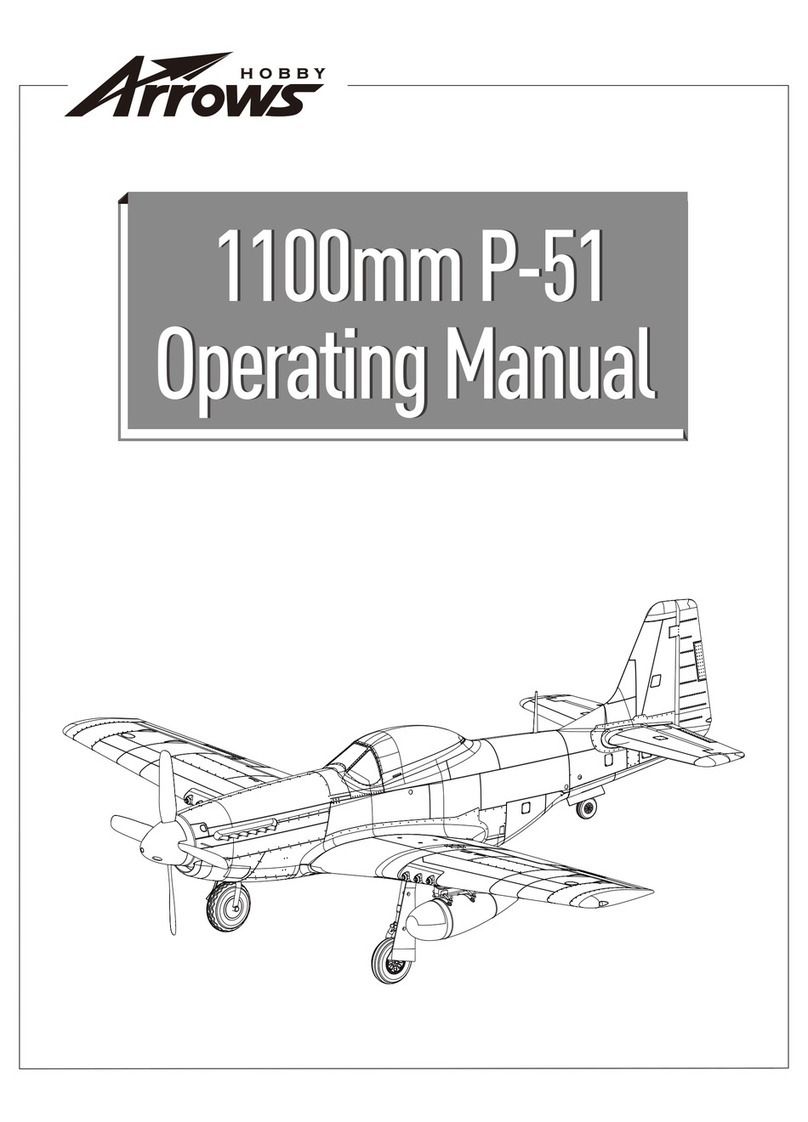
03
Table of contents Specifications
Introduction
Specifications
Kit contents
Model Assembly
Battery installation
Receiver diagram
Preflight check
Control horn and servo arm settings
Center of gravity(CG)
Before flying the model
Flying course
Trouble shooting
Spare parts list content
················································ 3
·············································· 3
··············································· 3
·········································· 4
········································ 6
········································· 6
············································ 6
················· 7
··································· 8
·································· 8
·············································· 9
········································· 10
································· 10
Introduction
Wingspan
Overall length
Flying weight
Motor size
Wing load
Wing area
ESC
Servo
Recommended battery
Kit contents
Before assembly, please inspect the contents of the kit. The photo below details the contents of the kit with labels. If any
parts are missing or defective, please identify the name or part number (refer to the spare parts list near the end of the
manual) then contact your local shop.
Features:
Simple is beautiful. Without any landing gear to deal with, the Arrows Hobby 50mm T-33 is lightweight and streamlined – perfect for
those with a tight flying field or budget!
To minimize drag, increase flight time and guarantee precision flight characteristics of the T-33, Arrows Hobby designed a rigid sin-
gle-piece wing structure and horizontal stabilizer. The lightweight airframe and exceptional aerodynamics give the Arrows Hobby
50mm T-33 excellent low speed handling and flight time – uncharacteristic for small EDF jets of its size.
Power comes courtesy of a 50mm 11-blade fan unit, 2627-4500KV brushless motor and a high performance 30A ESC (with 3A
BEC)- giving unparalleled speed and sound.
In addition, Arrows Hobby takes the details a step further, with a steering gear protective shell on the bottom of the wings to facilitate
belly landings. There are distinctive fuel tanks on the wingtips, and detailed decals to enhance the scale details.
How do you get pinnacle performance on a small budget? Let Arrows Hobby work its magic with the 50mm T-33!
• Powerful 2627-4500KV brushless motor.
• Highly efficient 50mm 11-bladed EDF unit.
• Reliable, high-performance 30A ESC with 3A BEC.
• Simple lightweight design for extended flight times.
• Highly attractive trim scheme for maximum visibility in the air.
• New anti-corrosive water-based paint for better color and gloss.
• PNP with Vector system - allowing three flying modes.
• Uncompromised performance despite being budget friendly!
800.5mm(31.5in)
750mm(29.5in)
~ 495g
Brushless2627-KV4500
44.2g/dm²
11.2dm²
30A
9g Servo x 3
11.1V 1300mAh 30C
A.
D. E.
B.
C.
A: Fuselage B: Main wing C: Horizontal stabilizer D: Auxiliary fuel tanks E: Screw set(KA2.0x12*4)
